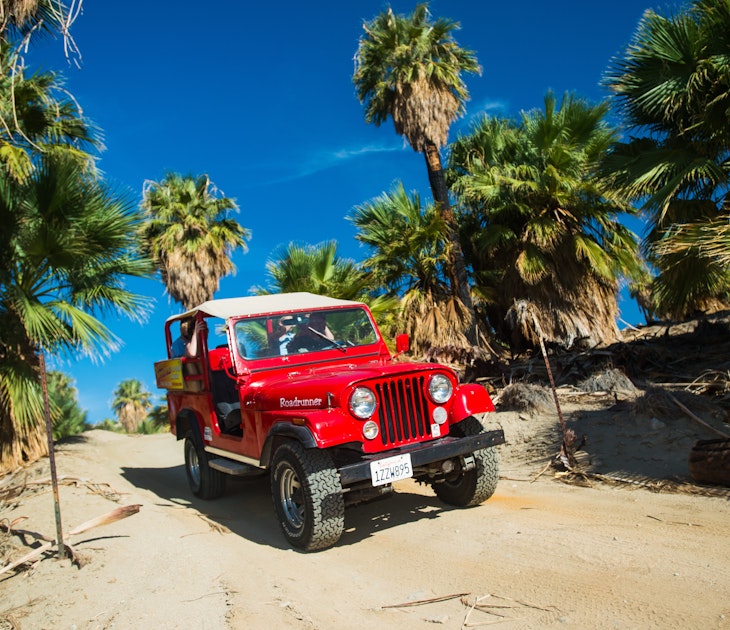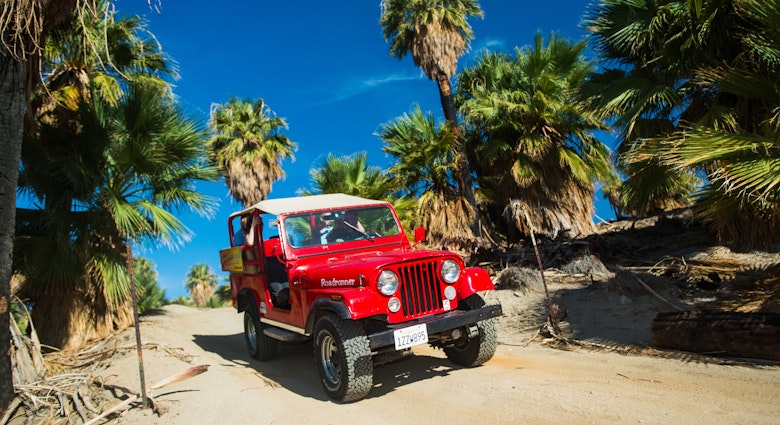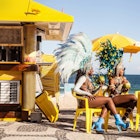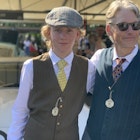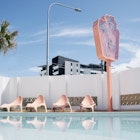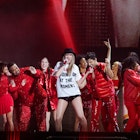Downtown Los Angeles (or DTLA) is experiencing an exciting renaissance of art, food, and culture thriving in its historic spaces. With plenty of public plazas to enjoy, rich with history and new sights alike, DTLA is a must-visit for any California traveler.
Immerse yourself in California's rich multicultural past, artsy enclaves, and film history at these neighborhoods and attractions around the city center. Be sure to bring along an appetite – LA's reputation as a foodie hot spot is on full display here.
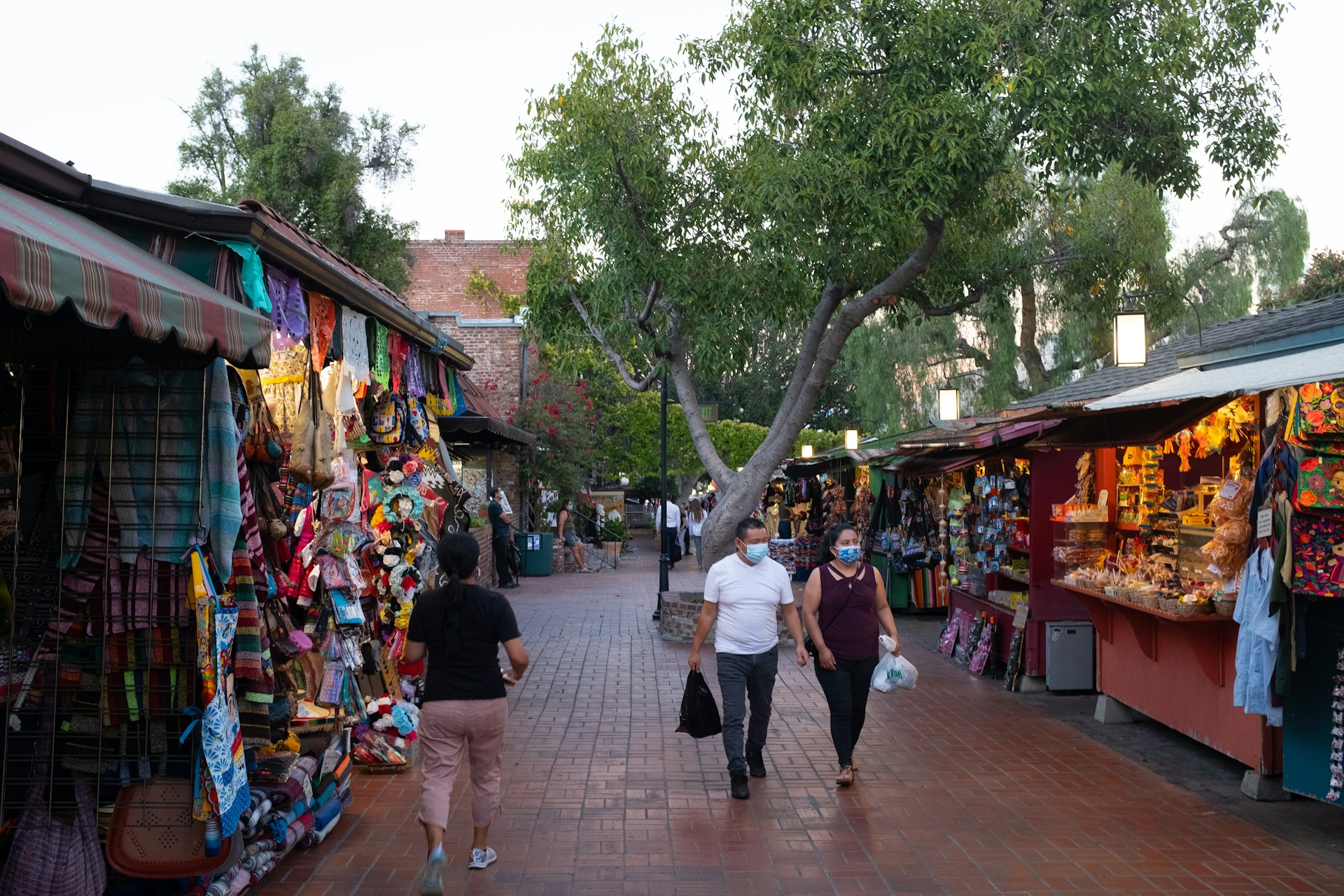
Olvera Street
History lovers should head straight for Olvera Street, where Los Angeles began. Stroll through the furnished rooms of the Avila Adobe, built in 1818 and the oldest standing residence in Los Angeles. Then swing past the city's first church, firehouse, and theater. Here, history is anything but old and stuffy. Along with the open-to-the-public historic sites, there's a bustling Mexican marketplace offering handmade goods, as well as a plaza that hosts lively music and dancing.
Central Plaza, Chinatown
Chinatown is full of multi-generational businesses in buildings that were erected in the 1930s and 1940s. The neighborhood was conceived as a place where Chinese-Americans could live and thrive after the construction of Union Station forced the community to relocate in the late 1930s. Longtime businesses like Phoenix Bakery have flourished for generations. Stop in for a slice of famous strawberry cake at this family-owned bakery, and take it around the corner to Chunky Paper, a modern gift shop and art store that offers hot and cold tea services on their patio.
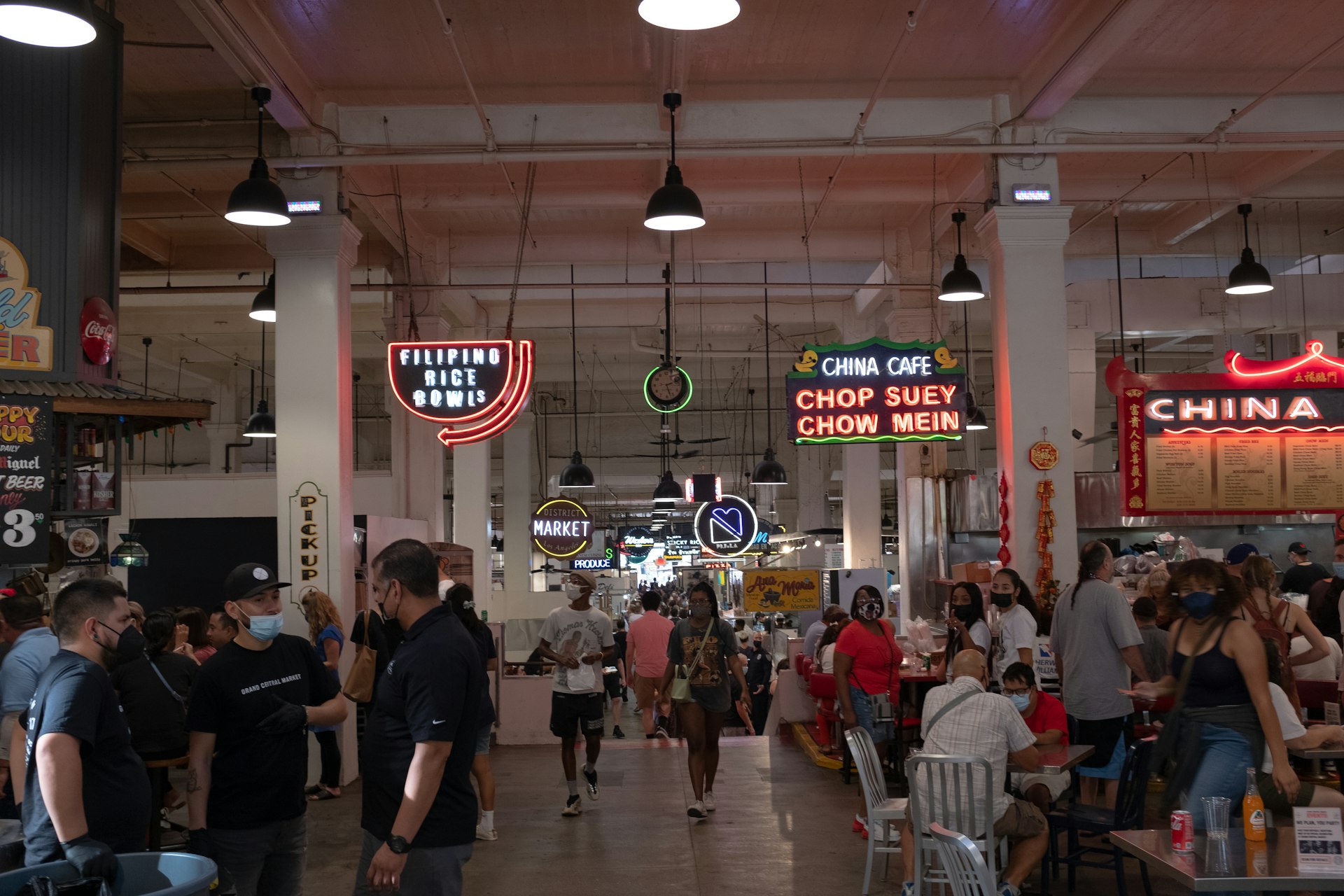
Grand Central Market
Home to 40 vendors, Grand Central Market, has a little something to please every palate. The market, opened in 1917, is home to a typically-DTLA mix of longtime vendors and hip new restaurant outposts — a fusion of the cultures and cuisines that make Los Angeles unique. Try food from a few different vendors and sit at any of the communal tables dotting the open spaces between market stalls. It's the perfect place to stop in for lunch on your way to explore the rest of the city, especially as it's across S Hill Street from one of LA's most historic landmarks: Angels Flight, the world's shortest railway. The 298-foot-long funicular takes rides up and back down the hill for $1 each way.
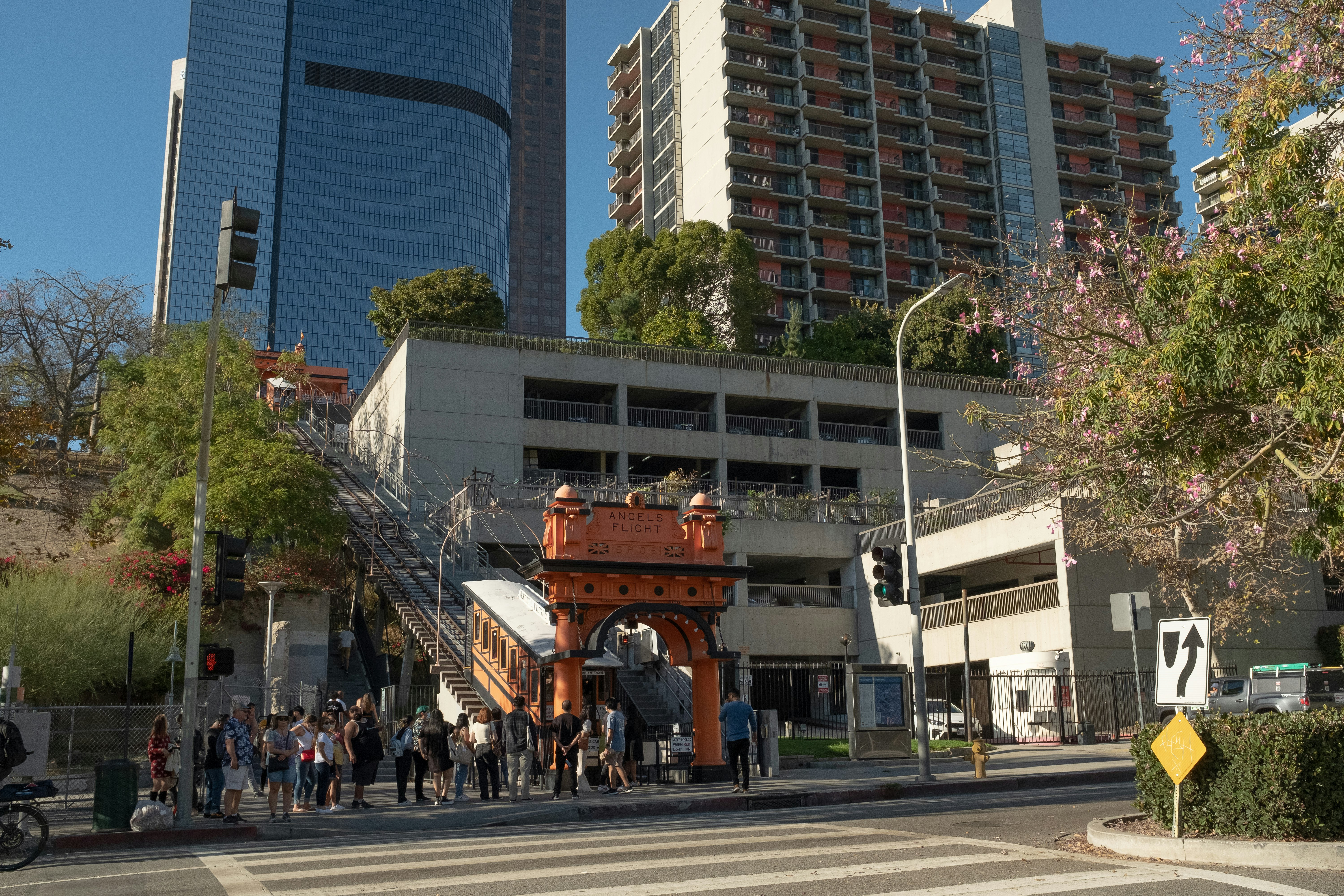
Broadway Theater and Commercial District
Broadway St. is known for its row of vintage movie palaces, spanning 6 blocks. Some theaters, like the Orpheum, still host ticketed events. Others have been repurposed for retail and public use. Before World War II, these theaters saw countless film premieres in their heyday, when the area was a hub for LA's early entertainment scene. Check before you travel to see if any shows are playing to get full access to the beauty of these theaters. Even if tickets aren't in your budget, you can ogle the architecture along this historic street. Pop inside the historic Tower Theater, restored to its original glory and repurposed as an Apple store, or take the elevator up to the rooftop of the Ace Hotel above the old United Artists Theatre for a drink and a beautiful view.
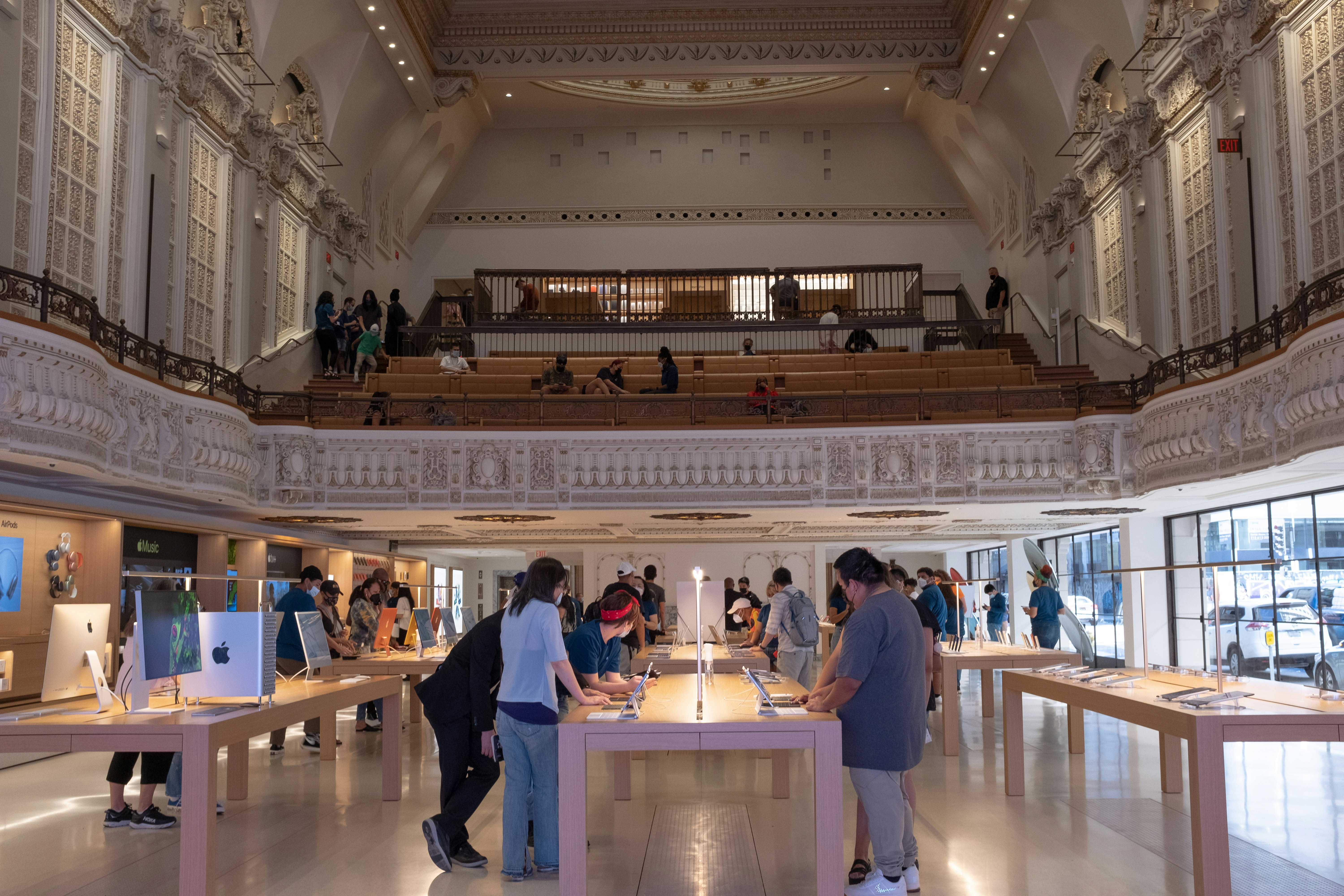
Arts District
The Arts District is a vibrant downtown neighborhood with artists and the city's hottest restaurants occupying old industrial buildings. Head into the free art gallery at Hauser and Wirth to greet the live chickens in the onsite garden and peruse the bookstore. If you're hankering for a cocktail, the building also houses a restaurant, Manuela, that whips up their own ginger beer and the best biscuits in the city. Head down the street and grab an ice cream at West Coast favorite Salt & Straw. The Arts District is most concentrated in the triangle formed by 3rd and Traction Avenue but venture south along Mateo street for surprising restaurants and boutiques operating out of old manufacturing centers.
Little Tokyo
Bordering The Arts District is Little Tokyo. The two of these neighborhoods alone could fill an entire day of exploring. Japanese shops, grocers, and tea stores line the plazas and surrounding streets of this trend-setting area. Try mochi from one of the sweet shops or grocery stores. This Japanese rice cake was popularized in the US when Little Tokyo businesswoman Frances Hashimoto added ice cream to the center, making it the most delicious way to sample the area's rich history! Little Tokyo is home to two prominent museums, the Japanese American National Museum and Geffen Contemporary at MOCA. Both welcome visitors to beat the heat and enjoy the art and historical exhibitions on display.
ROW DTLA
An arts and culture hub south of the Arts District, ROW DTLA is a shopping center based out of buildings built by the Southern Pacific Railroad between 1917 and 1923. One of the largest projects of its kind, the giant facilities onsite offer retail space, restaurants, and creative offices. But the best part of ROW is its abundance of public plazas, ample outdoor seating, and art displays, making it a great place to sit with a book and a coffee from Go Get Em Tiger. Looking for something a little more hands-on? Still Life Ceramics, Poketo Project Space, and Makers Mess offer craft classes and workshops for kids and adults. On summer weekends, ROW hosts Smorgasburg, a born-in-Brooklyn food market featuring some of the city's best purveyors of mobile cuisine. Before you leave, stroll through the produce market, once accounting for 10% of the nation's food distribution, and snack on whatever's in season!
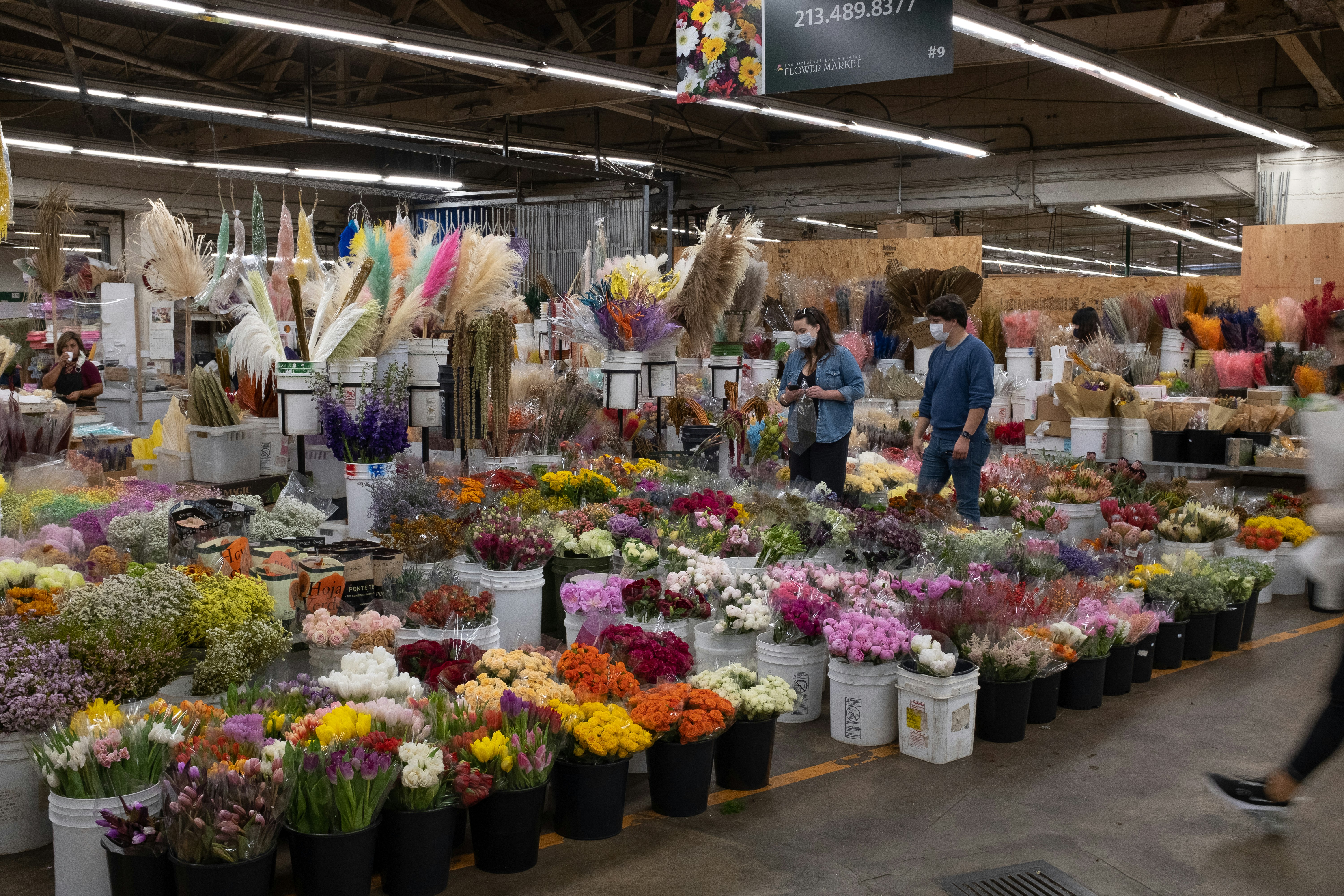
The Flower District
Home to three major flower markets and a slew of surrounding plant and flower stores, the Flower District is one of the most colorful places to browse in downtown LA. Thanks to Southern California's climate and daily shipments that travel the world to get here, you can get most flowers year-round and you can get them at wholesale prices. The first market in the area was established by Japanese-American growers in the early 1900s and drew European immigrants into the business by 1919. Today, the markets are open to the public, and though they open and close early, you can find deep discounts as shops start to shutter for the day. Having cash on hand is recommended.
St. Vincent's Court
A tiny, dead-end street in the heart of downtown LA, St. Vincent's Court transports visitors to Old World Europe. Originally part of Southern California's first higher learning institution, St. Vincent's Court was decorated with colorful plaster facades in the 1950s. Today, you can grab a sandwich at St. Vincent's Deli or a cappuccino from Cafe Bonjour. Dine al fresco to admire the kitschy details above the shops of this quaint alleyway.

